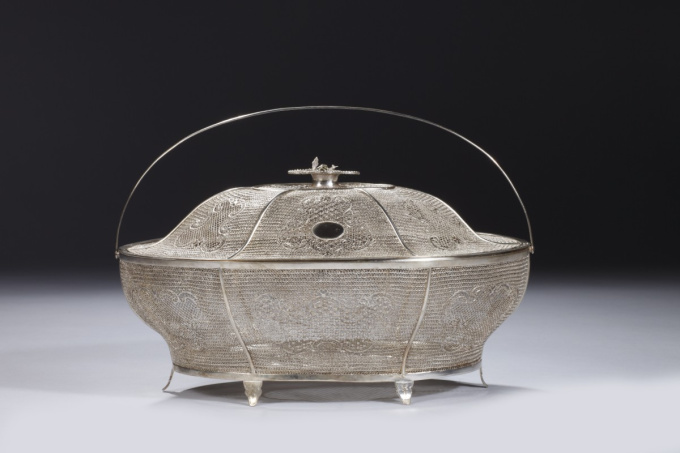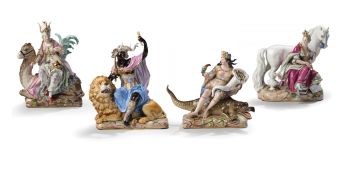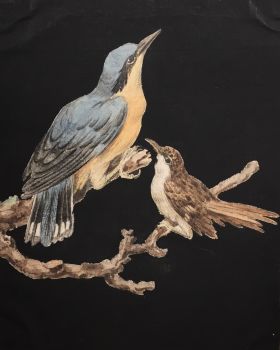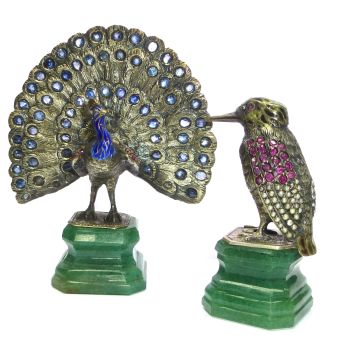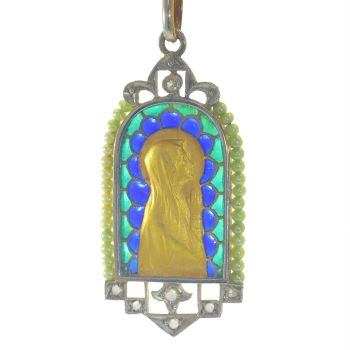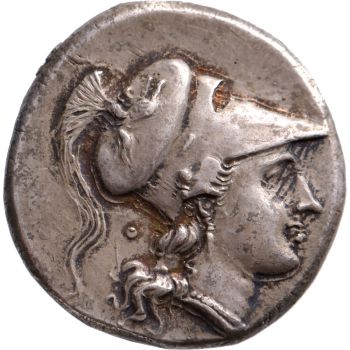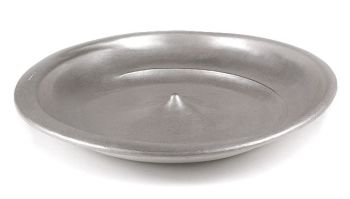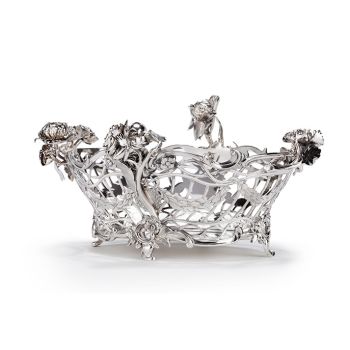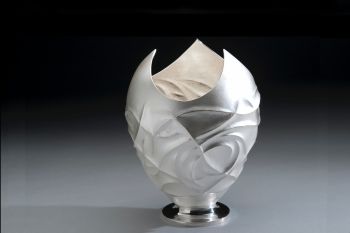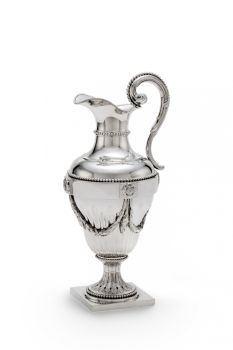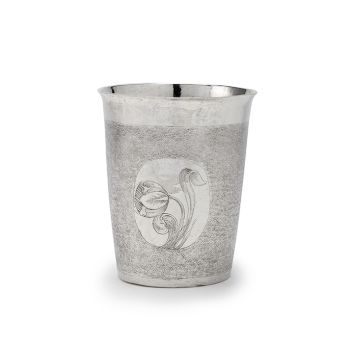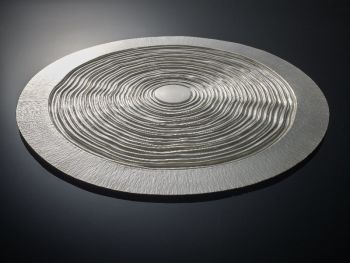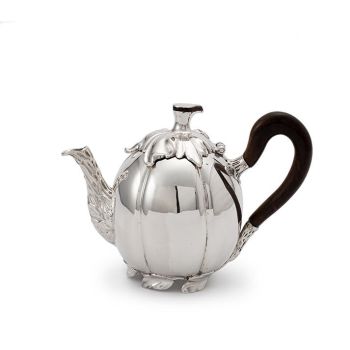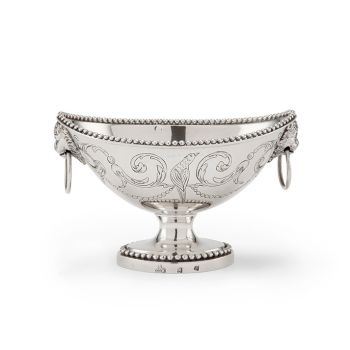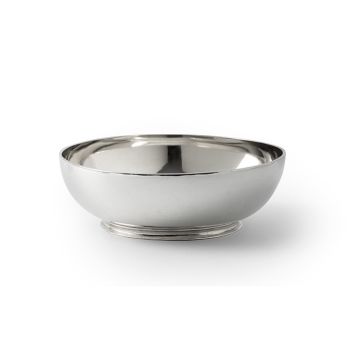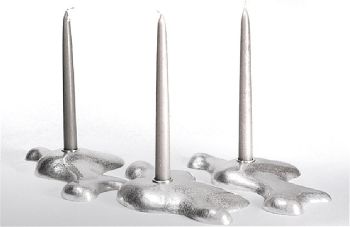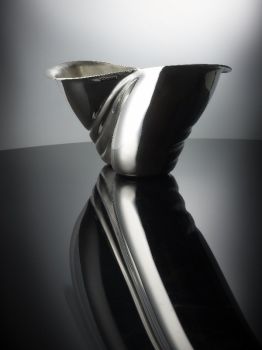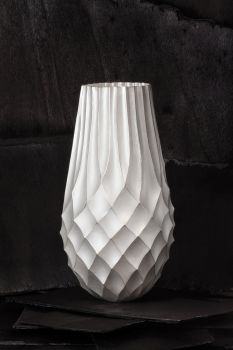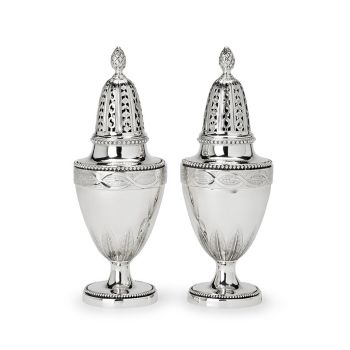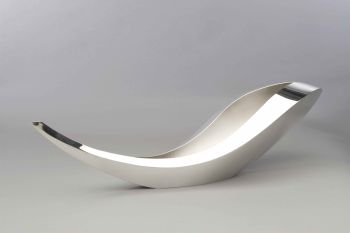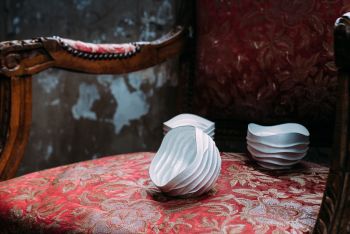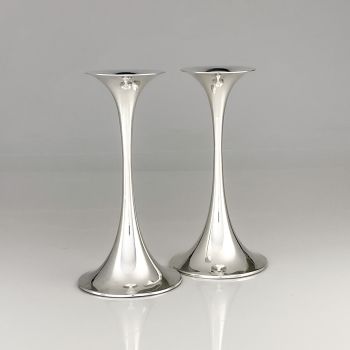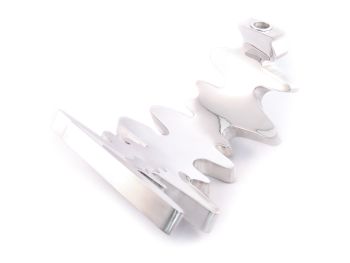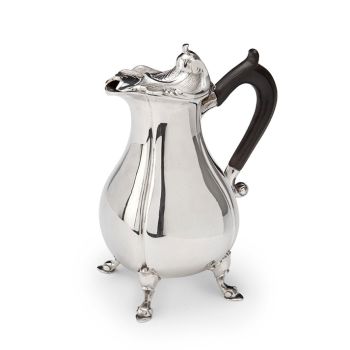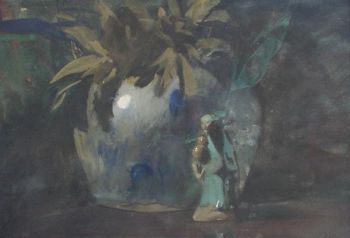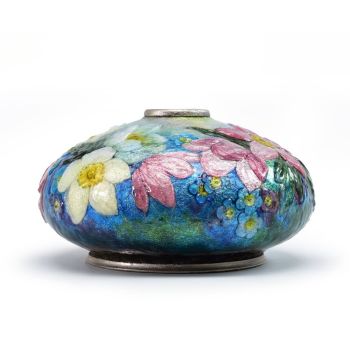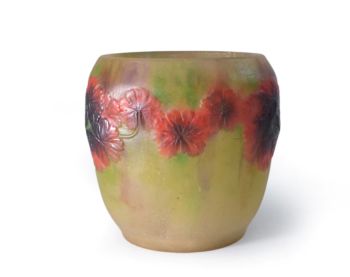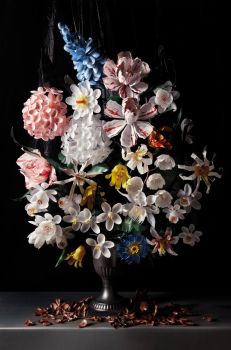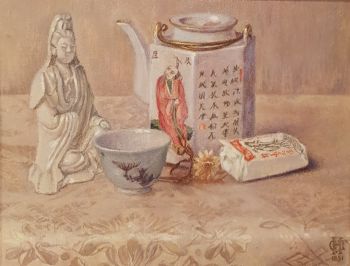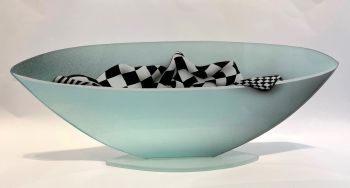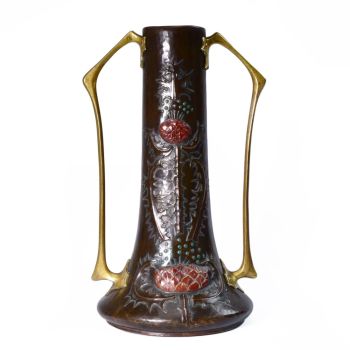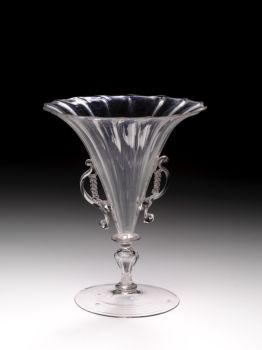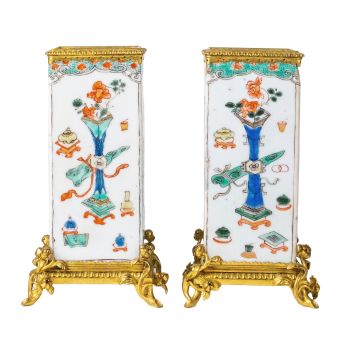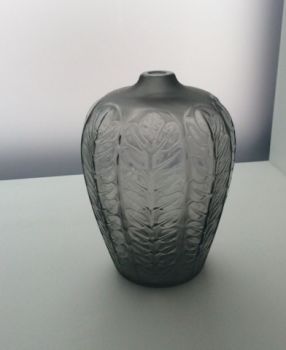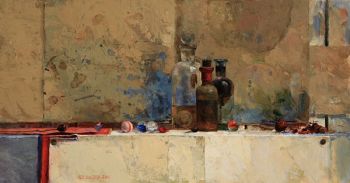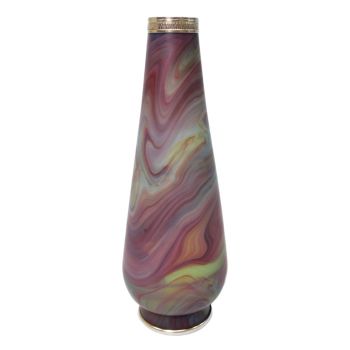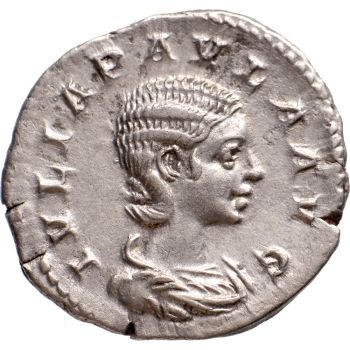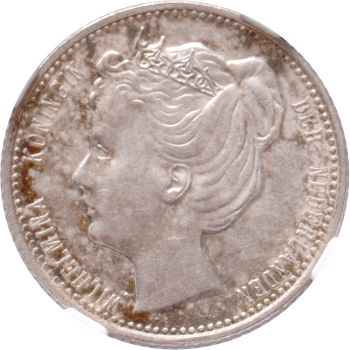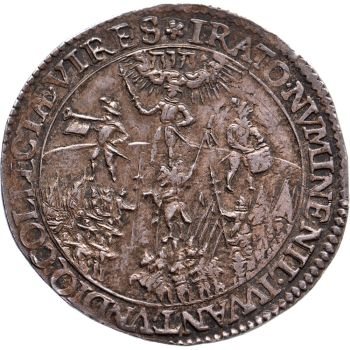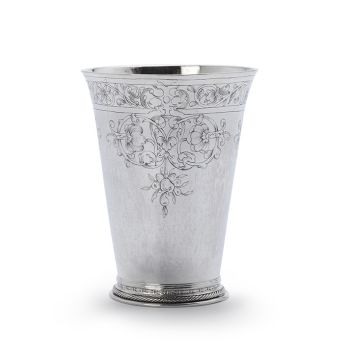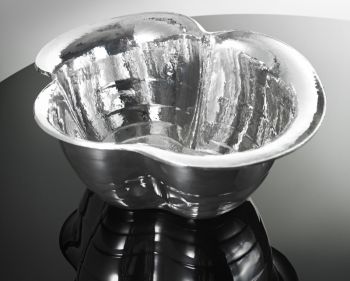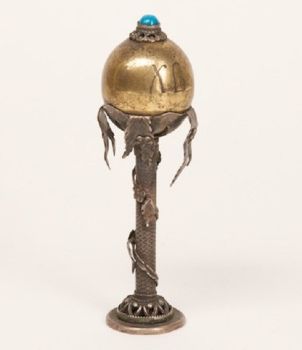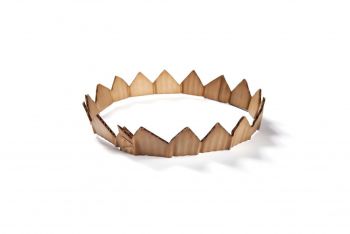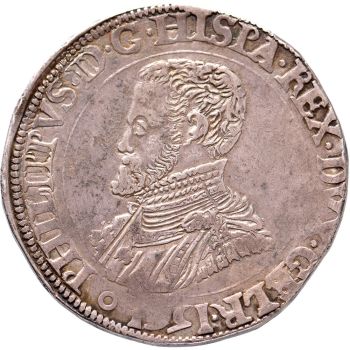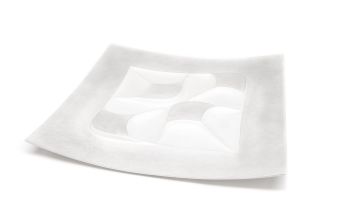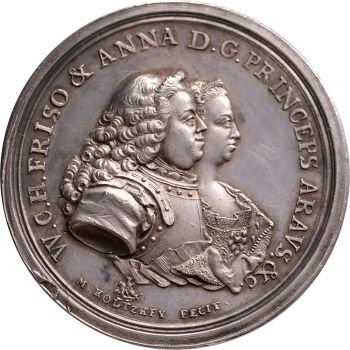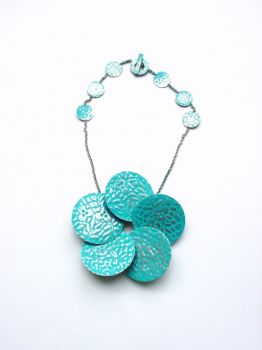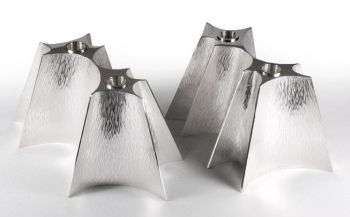Basket with cover, China, late 18th/early 19th century 1780 - 1820
Unknown artist
FiligreeSilver
15 ⨯ 26 cm
Currently unavailable via Gallerease
- About the artworkSilver filigree, the rim of the cover with insciption reading: 'To Miss Nisbet Hamilton on the occasion of her Marriage, with the respectful good wishes of her Tesidenters on her Winton Estate, September 1888'
Constance Nisbet Hamilton (1843-1920) married Henry Ogilvy.
Height 15 cm, length 26 cm
The origins of Winton House in East Lohan, Scotland, date back to 1480 when George 4th Lord Seton commenced the building of Winton Castle. In 1544 during the War of the Rough Wooing it was destroyed. In 1600 the Seton family were granted Earldom and the first Earl set about restoring the castle. Restoration was completed in 1620 more as a palatial than a defensive house.
After the Jacobite Rebellions the Seton family who backed the House of Stuart lost their title and Winton castle. In 1779 Mrs. Hamilton Nisbet bought Winton House and Estate, restored it and passed it down through females till in 1885 it was inherited by Constance Nisbet Hamilton (1843 – 1920). Through her grandmother Mary, who married Thomas 7th Earl of Elgin of the Elgin Marbles, Constance was related to the Elgin family.
In 1888 Constance married Henry Ogilvy. This certainly was the Scottish wedding of the year, attended by hundreds of nobility and the tenant farmers on her estate. Constance was an extremely wealthy woman owning several estates, castles, houses, villages and at least 40 farms in Scotland and England. This casket was one of the numerous gifts she received as a measure not only of thanks for interest shown and favours conveyed but certainly also as a measure of real affection. Winton House is still owned by the Ogilvy family and is considered a masterpiece of Scottish Renaissance architecture with a large collection of fine furniture and many important paintings. - About the artist
It might happen that an artist or maker is unknown.
Some works are not to be determined by whom it is made or it is made by (a group of) craftsmen. Examples are statues from the Ancient Time, furniture, mirroirs, or signatures that are not clear or readible but as well some works are not signed at all.
As well you can find the following description:
•“Attributed to ….” In their opinion probably a work by the artist, at least in part
•“Studio of ….” or “Workshop of” In their opinion a work executed in the studio or workshop of the artist, possibly under his supervision
•“Circle of ….” In their opinion a work of the period of the artist showing his influence, closely associated with the artist but not necessarily his pupil
•“Style of ….” or “Follower of ….” In their opinion a work executed in the artist’s style but not necessarily by a pupil; may be contemporary or nearly contemporary
•“Manner of ….” In their opinion a work in the style of the artist but of a later date
•“After ….” In their opinion a copy (of any date) of a work of the artist
•“Signed…”, “Dated….” or “Inscribed” In their opinion the work has been signed/dated/inscribed by the artist. The addition of a question mark indicates an element of doubt
•"With signature ….”, “With date ….”, “With inscription….” or “Bears signature/date/inscription” in their opinion the signature/ date/ inscription has been added by someone other than the artist
Artwork details
Related artworks
Unknown artist
Art nouveau en art déco objecten1900 - 1930
Price on requestBob J. Shimanovich Kunsthandel
Unknown artist
AN IVORY NETSUKE OF A DUTCHMAN FROLICKING WITH A SMALL BOY18th century
Price on requestZebregs & Röell - Fine Art - Antiques
1 - 4 / 12Unknown artist
A silver spoon commemorating Juff’ Margareta van Hoorn1656 - 1694
Price on requestZebregs & Röell - Fine Art - Antiques
Elisabeth Treskow
Afghan lapis lazuli inlaid with gold on a silver stand1950 - 1960
Price on requestJacob J. Roosjen SRI
Reynier de Haan
An elegant Louis XVI Dutch Silver Monteith Bowl 1778
Price on requestJacob J. Roosjen SRI
Unknown artist
A silver spoon commemorating Juff’ Margareta van Hoorn1656 - 1694
Price on requestZebregs & Röell - Fine Art - Antiques
1 - 4 / 24Jan Voerman sr
Still Life with flowers in a Chinese figurine1850 - 1900
Price on requestKunsthandel Pygmalion
1 - 4 / 24Unknown artist
Silver Russian Presentation Easter Egg1880 - 1899
Price on requestH.W.C. Dullaert Art & Antiques Dealer
Unknown artist
An Indian part-gilt silver-clad ceremonial sceptre or mace with a tiger’s head1850 - 1900
Price on requestZebregs & Röell - Fine Art - Antiques
 Curated by
Curated byDanny Bree
1 - 4 / 24

